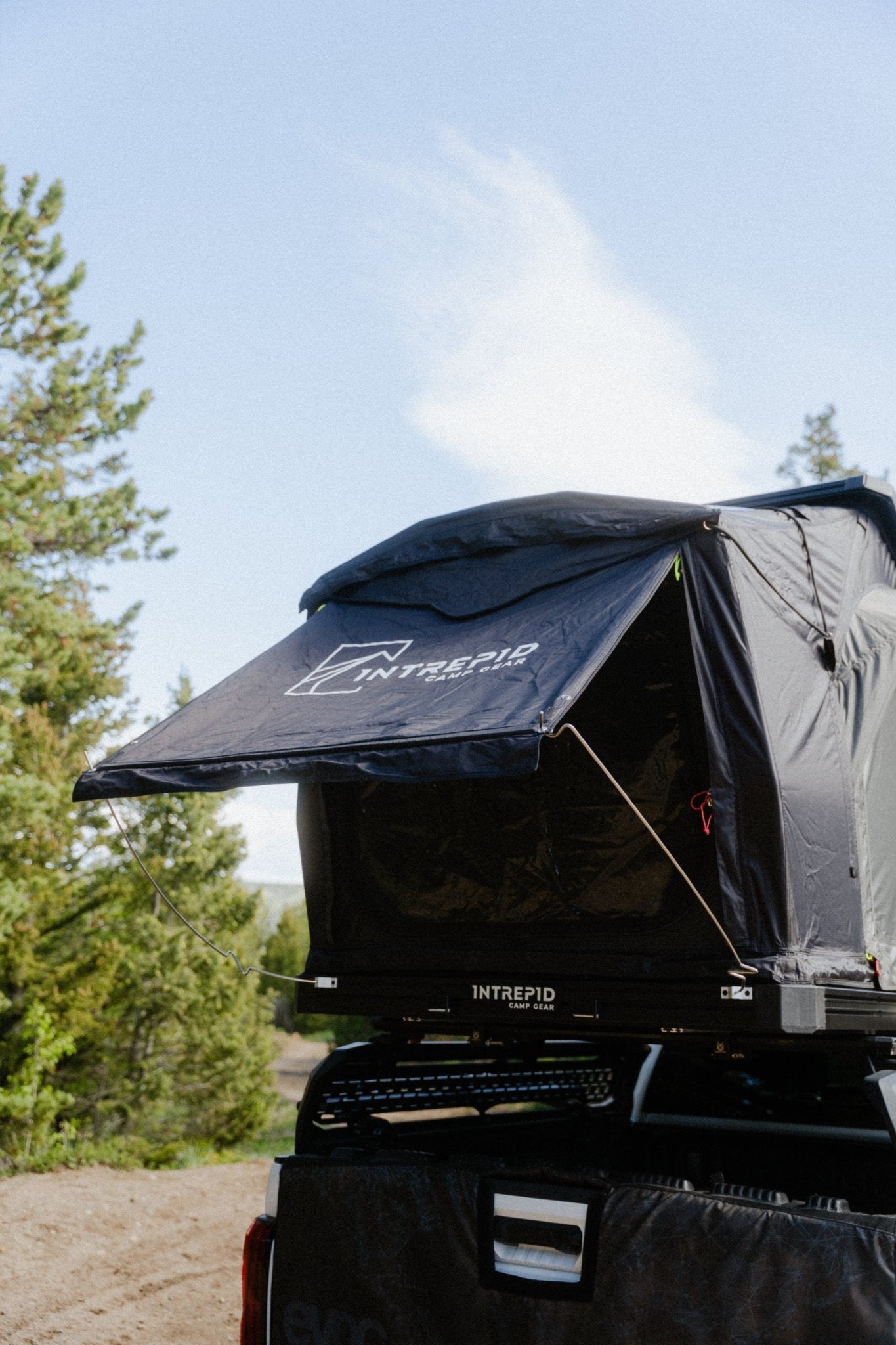What Is Boondocking? Your Guide to Types, Tips & Free Camping Spots
Boondocking is a style of camping that ditches the traditional campground experience in favor of freedom, solitude, and self-sufficiency. Also known as dispersed camping or dry camping, it typically means camping without hookups (water, electricity, or sewer) on public lands or other free-use areas. Whether you’re in a van, RV, or tent, boondocking offers a low-cost way to explore the outdoors and find remote, beautiful places off the beaten path. In this guide, we’ll break down the different types of boondocking, essential tips, and how to find great free camping spots.
What Is Boondocking, Really?
Boondocking is camping without any hookups—no water, sewer, or electricity—usually in remote or undeveloped areas. It’s a self-reliant style of camping that lets you live off-grid and truly connect with nature. Also known as dry camping, dispersed camping, or wild camping, boondocking is popular among vanlifers, RV travelers, and adventurous tent campers looking for solitude, scenic views, and major cost savings. Most boondocking takes place on public lands managed by agencies like the Bureau of Land Management (BLM) or U.S. Forest Service, where it’s generally legal to stay for free for a limited time. While there’s no check-in process or campsite number, boondockers are expected to follow Leave No Trace principles and respect local rules, such as distance from water sources or road access restrictions. For those seeking more freedom and fewer crowds, boondocking offers an affordable, flexible way to experience the outdoors.
Types of Boondocking (and What’s Not Boondocking)
Boondocking isn’t one-size-fits-all—there are several ways to do it depending on your setup and comfort level. From parking overnight in a store lot to finding remote campsites deep in the wilderness, each type of boondocking offers a different balance of convenience, solitude, and adventure. Here’s a quick breakdown of the main styles of boondocking to help you find what fits your travel style best.
True Boondocking on Public Land
True boondocking on public land means camping for free on places like Bureau of Land Management (BLM) land, national forests, or designated wildlife areas. These remote spots offer no amenities—no bathrooms, water, or trash services—so you’ll need to be fully self-contained and prepared to pack in and pack out everything. This type of boondocking is all about solitude, self-reliance, and immersing yourself in nature. Because these areas are often pristine and lightly regulated, it’s crucial to follow Leave No Trace principles to protect the environment for future campers. It is a privilege to be able to use these public lands with few regulations which puts the onus on users to treat it correctly.
Parking Lot Camping
Parking lot camping, often called “Wally Docking,” refers to spending the night in parking lots with permission—most commonly at a Walmart, select truck stops and rest areas. While it’s not true boondocking since it’s not in nature, it’s a convenient and free alternative for travelers needing a safe, quick overnight stop. Always check with the store manager or posted signs to ensure overnight parking is allowed.
Dry Camping in Developed Campground
Dry camping in developed campgrounds isn’t true boondocking, but it’s a similar experience with a few added comforts. These sites don’t offer hookups, but they’re located within organized campgrounds and often include amenities like fire rings, picnic tables, and vault toilets. While you’ll usually need to pay a small fee, it’s a great option for those who want a rustic, off-grid feel without going fully remote.
Mooch-Docking
Mooch-docking is when you camp on someone’s private property—often a friend’s driveway or through a service like Boondockers Welcome. It’s not public land and doesn’t count as true boondocking, but it can be a free or low-cost way to stay somewhere safe. Some hosts may offer hookups, while others provide just a flat spot to park, making it similar to dry camping with a social twist.
How Long Can You Boondock For?
Most public lands in the U.S.—including those managed by the Bureau of Land Management (BLM) and U.S. Forest Service—enforce a 14-day limit for boondocking in a single location within a 28-day period. This rule helps preserve the land, prevent overuse, and ensure fair access for others looking to enjoy dispersed camping. However, some areas may have shorter stay limits, especially in high-traffic zones or designated dispersed camping areas where sensitive ecosystems are at risk. Always check posted rules or local ranger stations for specific guidelines. To stay organized and avoid overstaying, consider logging your campsite locations, arrival dates, and notes using a camping app or a simple notebook. Responsible tracking not only keeps you compliant but also helps you revisit your favorite spots in the future.
How to Find Boondocking Spots
Finding great boondocking spots starts with the right tools. Apps like Campendium, iOverlander, FreeRoam, and The Dyrt are popular among seasoned campers for locating free and public land camping. You can filter search results to show only free sites or those located on public lands like BLM or national forests. Be sure to read recent user reviews to get up-to-date insights on road conditions, safety, cell service, and site accessibility—especially important for RVs or low-clearance vehicles. If you’re unsure whether camping is allowed in a specific area, a quick call to the local land management office (BLM or Forest Service) can save you hassle or a potential fine. For an extra layer of planning, use Google Maps’ satellite view to preview the terrain, check for open pull-outs, and make sure the roads are passable. A little research goes a long way toward finding safe, scenic, and legal boondocking spots.
Boondocking Tips
Boondocking offers freedom and solitude, but it also requires preparation and responsibility. Whether you're in a van, trailer, or RV, a few key practices can make your off-grid camping experience smoother, safer, and more enjoyable. Here are some essential tips to keep in mind:
-
Arrive during daylight – It’s much easier to spot hazards and find level ground before dark.
-
Scout dirt roads before driving your rig – Walk or bike ahead if unsure to avoid getting stuck or damaging your vehicle.
-
Be fully self-contained – Bring all the water, food, and supplies you’ll need.
-
Use solar panels or a quiet generator – Keep your power going without disturbing the peace.
-
Download offline maps – GPS apps may not work where there's no signal.
-
Check stay limits and land rules – Know how long you can legally stay and what’s allowed.
-
Practice Leave No Trace – Pack out all trash and leave nature as you found it.
-
Manage your waste responsibly – Use dump stations or pack out human waste if necessary.
-
Conserve water and energy – Every drop and watt counts off-grid.
-
Have a backup campsite in mind – Your first choice might be full or inaccessible.
-
Respect others’ space and privacy – Give fellow campers plenty of room.
-
Plan for no cell service – Let someone know your plans and bring a map or satellite device.
-
Use leveling blocks or pads – Keeping your rig level improves comfort and appliance function.
-
Keep weather in mind – Rain or snow can quickly turn roads impassable.
-
Carry basic repair tools and emergency supplies – Be ready for unexpected issues far from help.
Boondocking FAQs
1. Why do people boondock?
People boondock to enjoy low-cost or free camping, greater privacy, and access to remote, scenic areas. It offers a chance to disconnect from crowds and embrace a self-reliant lifestyle. Many also appreciate the simplicity and flexibility that off-grid camping provides.
2. Can you boondock at Walmart?
Yes, some Walmarts allow overnight parking, but it varies by location. Always check with store management before staying, follow posted signs, and park out of the way. While convenient, Walmart stays are best for short-term rest, not extended camping.
3. What are the downsides of boondocking?
Boondocking requires full self-sufficiency, including power, water, and waste management. You may face limited cell service, rough roads, and weather challenges. It also demands research and planning to find legal, accessible sites and to leave minimal impact on the environment.





Share: